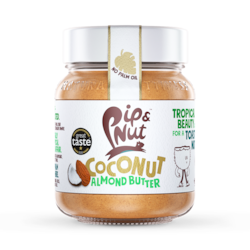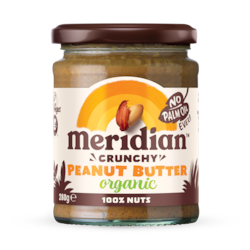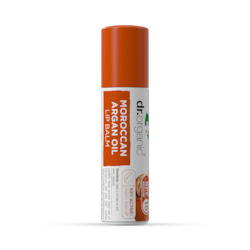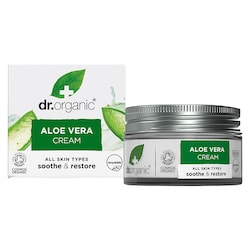15% off £20
Is almond butter good for you?

Summary
1What is almond butter?
Much like peanut butter, or any other nut butter for that matter, almond butter is the process of blending almonds into a fine paste...
2Almond butter nutrition
Along with their healthy fats, almond butter also contain: Fibre, Protein, Vitamin E, Calcium, Iron, Zinc, Potassium, Magnesium...
33 health benefits of almond butter
Due to the fact that almond butter is made from ground almonds, they share many of the same health benefits as whole almonds. Almond butter may be...
What is almond butter?
Is almond butter healthy?
Almond butter nutrition
| 1 tablespoon of plain; unsalted almond butter (16g) | Nutrients per serving |
|---|---|
| Calories | 98kcal |
| Protein | 3.4g |
| Fat | 9g |
| Carbohydrates | 3g |
| Fibre | 1.6g |
| Sugar | 0.7g |
Diets almond butter is suitable for
- Keto
- Gluten-free
Almond butter vs peanut butter

3 health benefits of almond butter
10 almond butter uses
- Add it on top of your rolled oats or porridge as a nice nutty treat.
- Use it as an alternative to syrup on your pancakes, waffles and French toast
- Add almond butter and diced apples to cooked quinoa for a high-protein breakfast
- Blend a banana, kale, almond butter, almond milk, chia seeds, protein powder, and ice for an awesome smoothie
- Mix it with granola to make some healthy protein bites
- Make your own almond latte by warming up some milk, stirring in one teaspoon of almond butter until dissolved
- Spread some almond butter on a rice cake for a nice afternoon snack
- Combine almond butter with tamari and minced ginger for an Asian-inspired sauce that goes great on salmon, prawns and other seafood
- Use almond butter as a dip for your vegetables like celery or carrots
- Substitute your peanut butter for almond butter for a new take on pad Thai
Side effects of almond butter
- Nausea
- Shortness of breath
- Itchy mouth, tongue, throat, or eyes
- Trouble swallowing
- Anaphylaxis
In a nutshell…
You also asked...
No, although it’s easier to eat more nuts in butter form than it is nuts by themselves.
This is because you don’t have to chew each mouthful of nut butter as many times as raw nuts.
To address this, try eating your nut butters on a crunchy vegetable stick of celery or carrot, or spread onto apple slices. Some nuts also contain saturated fat, including cashews, macadamia nuts and Brazil nuts.
Men shouldn’t exceed 30g of saturated fat a day, and women 20g a day, so be extra mindful of portion size with butters from these nuts.
There are around 98 calories in almond butter per tablespoon.




































